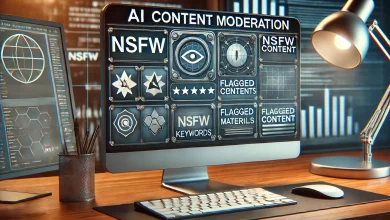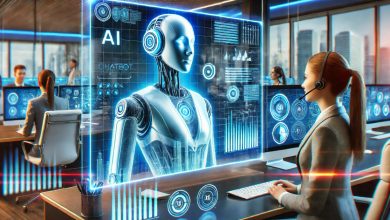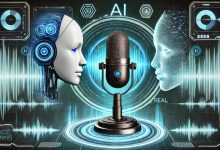The Rise of AI-Powered Translators: Breaking Language Barriers
The Rise of AI-Powered Translators: Breaking Language Barriers
As the world becomes ever more interconnected, it is communication that serves as a bridge uniting cultures, fostering collaboration, and powering global business. Nevertheless, one of the most lasting barriers in communication has been the language barrier. Learning new languages can be rewarding, but not everyone has the means to do so. This is precisely where artificial intelligence-powered translators are revolutionizing the domain, knocking down the language barriers and comforting everyone from different walks of life to talk smoothly.
1. The Traditional Approach to Translation
For centuries, Translation was alook a manual process, often done by professional translators who had a good command over the source and the target languages. While this approach has been successful, it is labor intensive, costly, and susceptible to human error. Over the last few years, machine translation (MT) has emerged to offer a faster solution, though earlier examples used to miss the mark in terms of nuance, context, and accuracy, rendering them ineffective for high quality translation.
2. The Emergence of AI in Translation
Artificial intelligence has revolutionized many sectors, and language translation is no exception. The development of neural networks, particularly deep learning models, has enhanced machine translation to unprecedented levels. AI-powered translators use sophisticated algorithms to analyze vast amounts of data, learn linguistic patterns, and adapt to different languages in ways that were once thought impossible.
One of the most significant breakthroughs came with the introduction of Neural Machine Translation (NMT). Unlike traditional machine translation, which relied on phrase-based translations, NMT processes entire sentences, capturing the meaning, syntax, and context in a way that feels more natural. This approach has dramatically improved translation accuracy, especially for complex languages with intricate sentence structures.
3. How AI-Powered Translators Work
At the core of AI-powered translation is a process known as deep learning, a subset of machine learning. Here’s a simplified overview of how it works:
Data Input: The system is fed millions of examples of translated text in different languages. This includes books, websites, conversations, and even legal documents. The AI learns the relationships between words, phrases, and sentence structures in various languages.
Language Model Training: The AI system processes these data sets and develops a statistical model of how language works. It recognizes patterns, such as word order, grammar, and contextual nuances.
Translation Output: When you enter a text to be translated, the AI processes the input through its model, providing the most accurate translation based on what it has learned. With continuous training, the system gets better at understanding more subtle distinctions in language.
This approach is vastly different from earlier translation systems that translated word-for-word or phrase-by-phrase, often producing awkward or inaccurate translations. AI, by contrast, focuses on meaning rather than strict linguistic rules.
4. Advantages of AI-Powered Translators
There are numerous benefits to using AI-powered translation tools, especially in today’s fast-paced, globalized world. Some of the key advantages include:
Speed and Efficiency: AI-powered translators can process and translate text in real time, making them incredibly fast. This is especially valuable in business environments where quick communication is essential. Platforms like Google Translate and Microsoft Translator offer instant translations, enabling users to communicate across languages in real time.
Cost-Effective: Hiring human translators for every document or conversation can be expensive. AI-powered translation tools significantly reduce this cost by providing a free or low-cost alternative that delivers high-quality translations.
Contextual Understanding: Unlike traditional machine translation, modern AI systems can understand context. They take into account not just the individual words but also the broader context of the sentence or paragraph, improving the accuracy and naturalness of the translation.
Accessibility: AI-powered translation tools make communication more accessible to people who may not be fluent in a particular language. This is particularly beneficial in industries like tourism, healthcare, and international business, where clear communication is crucial.
Scalability: AI translation systems can handle large volumes of content, making them ideal for multinational companies, media outlets, and governments that need to translate vast amounts of information quickly and accurately.
5. Real-World Applications of AI Translation
AI-powered translators are being used across various industries and sectors. Here are a few examples:
International Business: Companies that operate in multiple countries rely on AI-powered translation tools to communicate with clients, partners, and employees in different regions. These tools help them translate contracts, emails, reports, and marketing materials with speed and precision.
Healthcare: In medical settings, accurate communication is vital, especially when treating patients who speak different languages. AI translators are increasingly used in healthcare to bridge language gaps between patients and healthcare providers, ensuring better care and understanding.
Tourism: Tourists visiting foreign countries often struggle with language barriers. AI-powered translation apps help travelers navigate foreign places, read menus, understand signs, and even communicate with locals. This boosts the tourism industry and enriches the travel experience.
Education: AI translation tools are also transforming the education sector. They allow students to access learning materials in different languages, enabling a more inclusive and diverse learning environment. For educators, these tools make it easier to communicate with students from various linguistic backgrounds.
Customer Support: Many companies are adopting AI-powered chatbots and virtual assistants to communicate with customers in multiple languages. These AI tools are capable of answering questions, resolving issues, and providing information in real-time, regardless of the customer’s language.
6. The Challenges Ahead
While AI-powered translation has made significant strides, there are still challenges to overcome. Some of these challenges include:
Cultural Nuances: Language is not just about words; it also involves culture, idiomatic expressions, and local customs. While AI is improving, it still struggles with understanding the cultural context that often shapes how language is used.
Accuracy in Complex Languages: While AI performs exceptionally well with widely spoken languages like English, Spanish, and French, it still faces difficulties with less commonly spoken languages or those with complex grammatical structures.
Data Privacy: When using AI translation tools, users are often required to input sensitive information. There are concerns about how this data is stored and whether it could be accessed by unauthorized parties.
7. The Future of AI Translators
The future of AI-powered translators looks bright. As technology continues to evolve, AI translation systems will become even more sophisticated, offering more accurate, context-aware translations. With the integration of voice recognition and real-time translation, we could soon witness an era where language barriers are virtually eliminated, allowing for seamless communication across the globe.
Furthermore, the use of Augmented Reality (AR) and Virtual Reality (VR) technologies in translation could take things a step further. Imagine wearing AR glasses that translate foreign text in real-time or VR experiences that allow you to interact with people from different cultures as if you spoke the same language.
Conclusion
AI-powered translators are undeniably changing the way we communicate, enabling people from different linguistic backgrounds to connect more easily than ever before. By breaking down language barriers, AI is not only making the world more accessible but also fostering collaboration, business growth, and cultural exchange. While challenges remain, the rapid advancements in AI translation technologies suggest that a world without language barriers is closer than ever.







